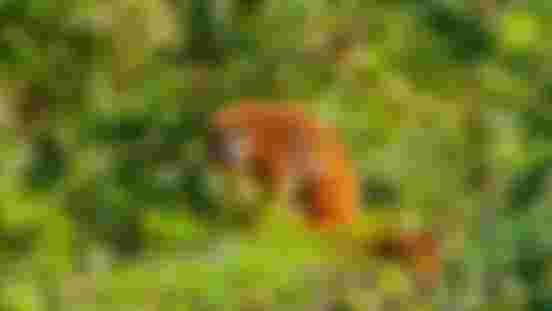Primates in Jeopardy: The monkey that 'howls'

Howler monkeys are aptly named for their extremely loud howls – usually at dawn or dusk – that can reach up to five kilometers away. The brown howlers are a loud and docile species found in a small Atlantic forest in Brazil – a hot and humid area prone to endemic yellow fever that threatens the lives of both humans and primates residing there. According to the latest report, there may be as few as 100 brown howlers left.

Howlers howl to mark their territory and to scare off predators. They usually gather in a troop of up to ten.
They are big in comparison to other species of monkeys in Central and South America. Their body length is usually around 55 centimeters, with an extra 60 centimeters of prehensile tails that help them grasp or hold on to tree branches. But their size makes them less agile than many other monkey species.

The factors that make them stand out also make them an easy target for hunters of bushmeat. Logging, cattle grazing and agriculture activities further fragment their habitats, not to mention the yellow fever, which poses a serious threat to all howler populations residing in Brazil's Atlantic forests. Due to their shrinking population, the brown howlers are even more vulnerable to this highly infectious disease, making them one of the world's 25 most endangered primates.

As the most common primate on Earth, homo sapiens share the same order with other 512 species across 93 countries. Non-human primates are our closest relatives. They play a significant role in various ecosystems – from the mysterious tropical forests to the grand African savannas. Their intelligence is fascinating and sheds light on studies of human society and behaviors.
However, many species of primates are on the brink of extinction as noted in the series "Primates in Jeopardy," based on the list "World's 25 Most Endangered Primates (2018-2020)" and co-published by the IUCN SSC Primate Specialist Group (PSG), International Primatological Society (IPS), Global Wildlife Conservation (GWC) and Bristol Zoological Society (BZS).
This is the tenth iteration of a biennial listing of a consensus of the 25 primate species considered to be among the most endangered worldwide and most in need of conservation measures.



